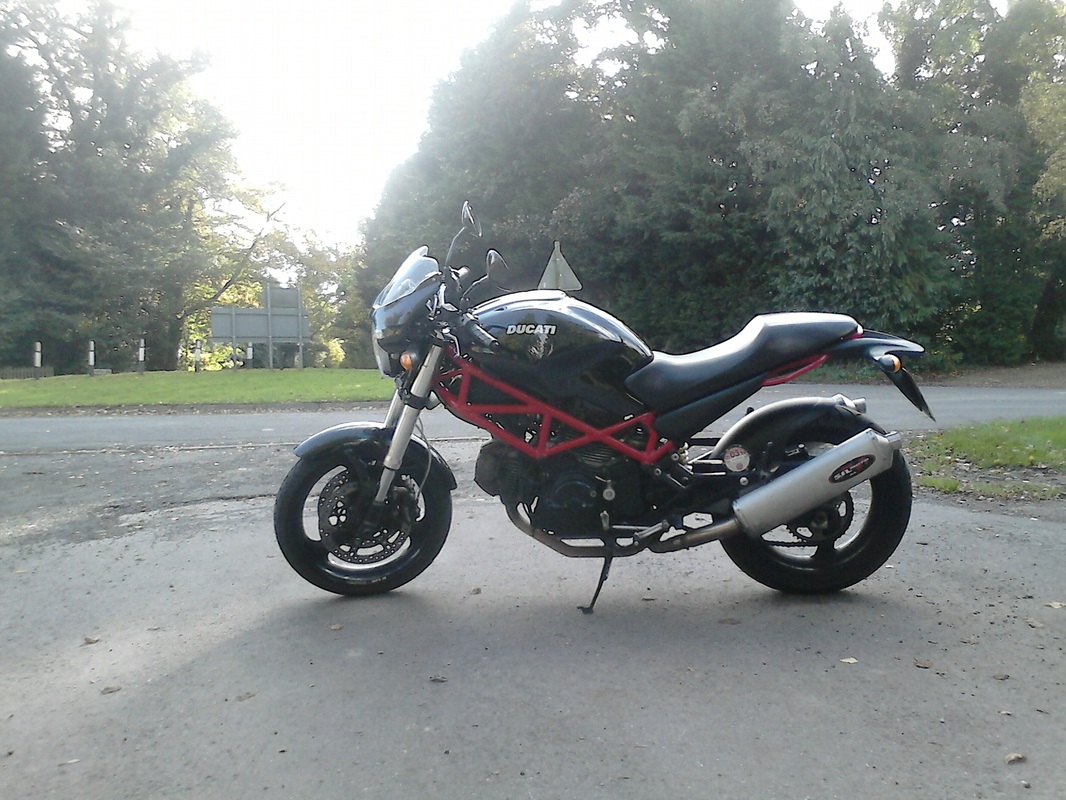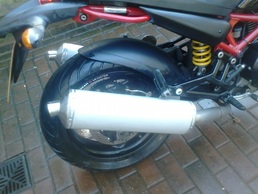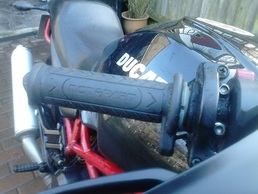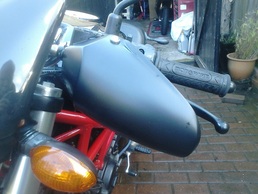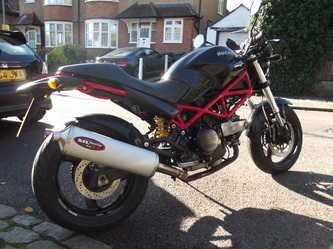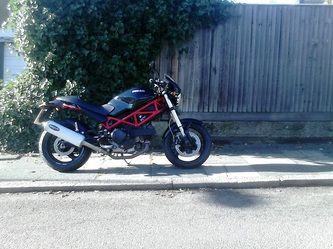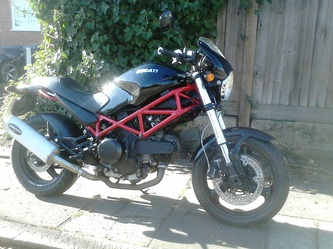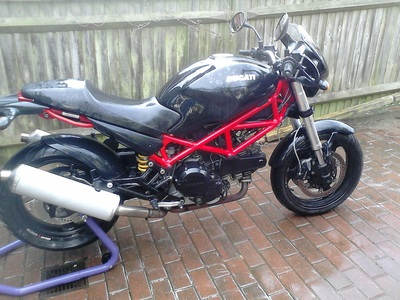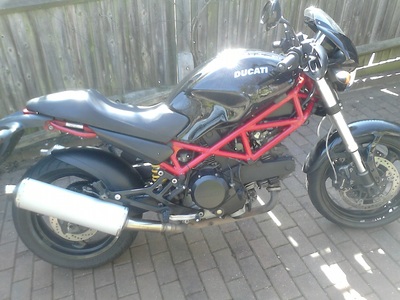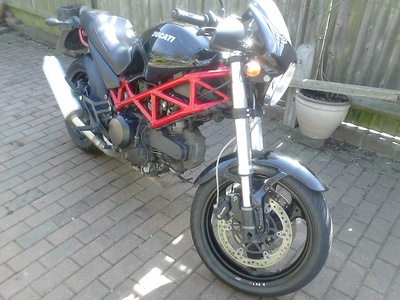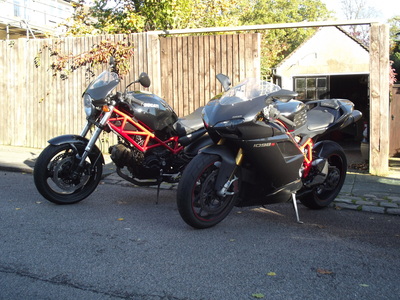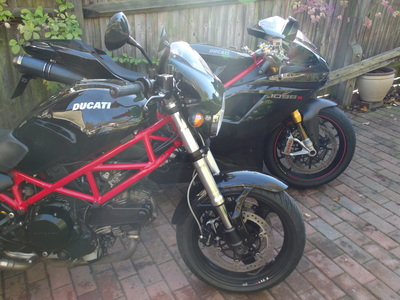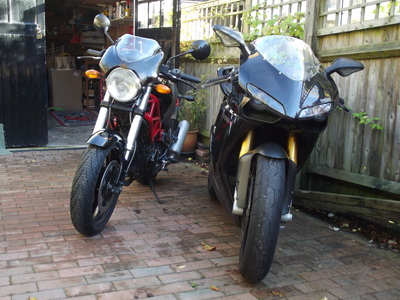ducati monster 695 2013 - 2014
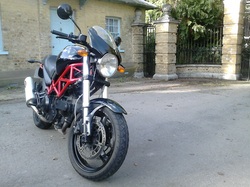
Its 1992. Ducati and parent company Cagiva are struggling. Ducati designer Miguel Angel Galluzzi has been tasked by Ducati Technical director Massimo Bordi to design a new bike ‘something which displayed a strong Ducati heritige but which was easy to ride and not a sports bike’ Bordi wants a cruiser, but Galluzzi has a different idea. He comes up with a concept for a naked bike; a bike which in a short space of time, will turn out to be both Ducatis most popular model, plus the bike that ultimately saves the company. By 2005 the Monster will account for more than half of Ducatis sales
To keep costs low, ‘Il Mostro’, was designed as a ‘parts bin special’. The front of the trellis frame and the engine were previously used in the 900ss and the front forks are donated by the 750. The bike was designed to be used without any bodywork, heralding a new era of naked motorbikes.
Between 1993 and 1996, Ducati unveiled the M400, M600, M750 and the top of the range M900, which ironically was the first bike released in 1993. Remaining pretty much unchanged, with the exception of several limited edition models, in 2000, the M900 received fuel injection and was joined in 2001 by the S4 which was powered by a slightly detuned 916 Superbike engine. The biggest visual clue to this potent roadster was the twin double exhausts on the right side of the bike and the sweet single sided swing arm.
In 2002 the M600 was heavily updated and became the Monster 620, which by 2006 has morphed into the 695, which was quickly replaced in 2008 by the 696. As well as the continued evolution of the S4, with RS, 800 and 1000 models, from 2008, the Monster family would now include the 1100 models.
From 2010 the range included the 696, a limited market specific 795, the 796 and 1100 Evo and in 2013, Ducati unveiled that latest addition to the family, the Monster 1200 which has replaced the 1100 Evo, leaving the current range as only the 696, 796 and 1200.
Often seen as a great first big bike, The Monster is also a great way to enter the world of Ducati ownership.
To keep costs low, ‘Il Mostro’, was designed as a ‘parts bin special’. The front of the trellis frame and the engine were previously used in the 900ss and the front forks are donated by the 750. The bike was designed to be used without any bodywork, heralding a new era of naked motorbikes.
Between 1993 and 1996, Ducati unveiled the M400, M600, M750 and the top of the range M900, which ironically was the first bike released in 1993. Remaining pretty much unchanged, with the exception of several limited edition models, in 2000, the M900 received fuel injection and was joined in 2001 by the S4 which was powered by a slightly detuned 916 Superbike engine. The biggest visual clue to this potent roadster was the twin double exhausts on the right side of the bike and the sweet single sided swing arm.
In 2002 the M600 was heavily updated and became the Monster 620, which by 2006 has morphed into the 695, which was quickly replaced in 2008 by the 696. As well as the continued evolution of the S4, with RS, 800 and 1000 models, from 2008, the Monster family would now include the 1100 models.
From 2010 the range included the 696, a limited market specific 795, the 796 and 1100 Evo and in 2013, Ducati unveiled that latest addition to the family, the Monster 1200 which has replaced the 1100 Evo, leaving the current range as only the 696, 796 and 1200.
Often seen as a great first big bike, The Monster is also a great way to enter the world of Ducati ownership.

